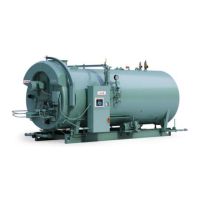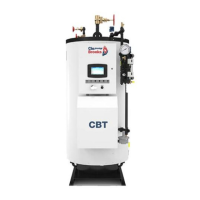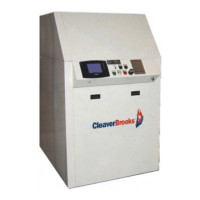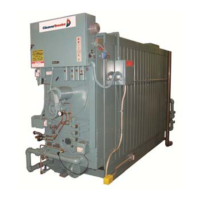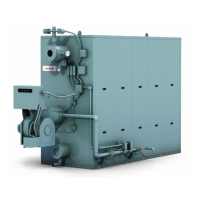Waterside Care
2-8
750-392
CBEX-DE
2.6 — Washing Out
2.6.1 — Steam Boiler
No later than three months after initially placing the boiler into operation, and thereafter as conditions warrant,
the pressure vessel should be drained after being properly cooled to near ambient temperature. Handhole covers
should be removed and waterside surfaces should be inspected for corrosion, pitting, or formation of deposits.
Upon completion of the inspection, the pressure vessel interior should be flushed out, as required, with a high
pressure hose. If deposits are not fully removed by flushing, a consultation may be required with your local
Cleaver-Brooks authorized representative. In extreme cases, it may be necessary to resort to acid cleaning. Pro-
fessional advice is recommended if acid cleaning is required.
The inspections will indicate the effectiveness of the feedwater treatment. The effectiveness of treatment, the
water conditions, and the amount of fresh water make-up required are all factors to be considered in establishing
frequency of future pressure vessel washouts. Contact your local Cleaver-Brooks authorized representative for
more information.
2.6.2 — Hot Water Boiler
In theory, a hot water system and boiler that has been initially cleaned, filled with raw water (and water treated),
and with no make-up water added, will require no further cleaning or treatment. However, since the system (new
or old) can allow entrance of air and unnoticed or undetected leakage of water, introductions of raw water make-
up or air may lead to pitting, corrosion and formation of sludge, sediment, scale, etc., on the pressure vessel
waterside. If the operator is absolutely certain that the system is tight, then an annual waterside inspection may
be sufficient. However, if there is any doubt, the pressure vessel waterside should be inspected no later than
three months after initially placing the boiler into operation, and periodically thereafter as indicated by conditions
observed during inspections.
AIR-DRYING ALONE WILL NOT SUFFICIENTLY ENSURE AGAINST REFRACTORY DAMAGE. HEAT-CURING
MUST BE PERFORMED AT INITIAL START-UP. RUN THE BURNER AT LOW FIRE FOR A PERIOD OF 6 TO 8
HOURS. AFTER THIS TIME THE FIRING RATE MAY BE GRADUALLY INCREASED. FAILURE TO FOLLOW THIS
PROCEDURE MAY RESULT IN DAMAGE AND CRACKS IN THE REFRACTORY.
!
Caution
Important
!
There are three approximately 1/4 inch holes provided along the bottom of the rear head to remove
water from the refractory curing process. These holes should be sealed shut with a high temperature
caulk upon completion of the refractory cure procedure.
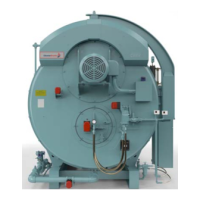
